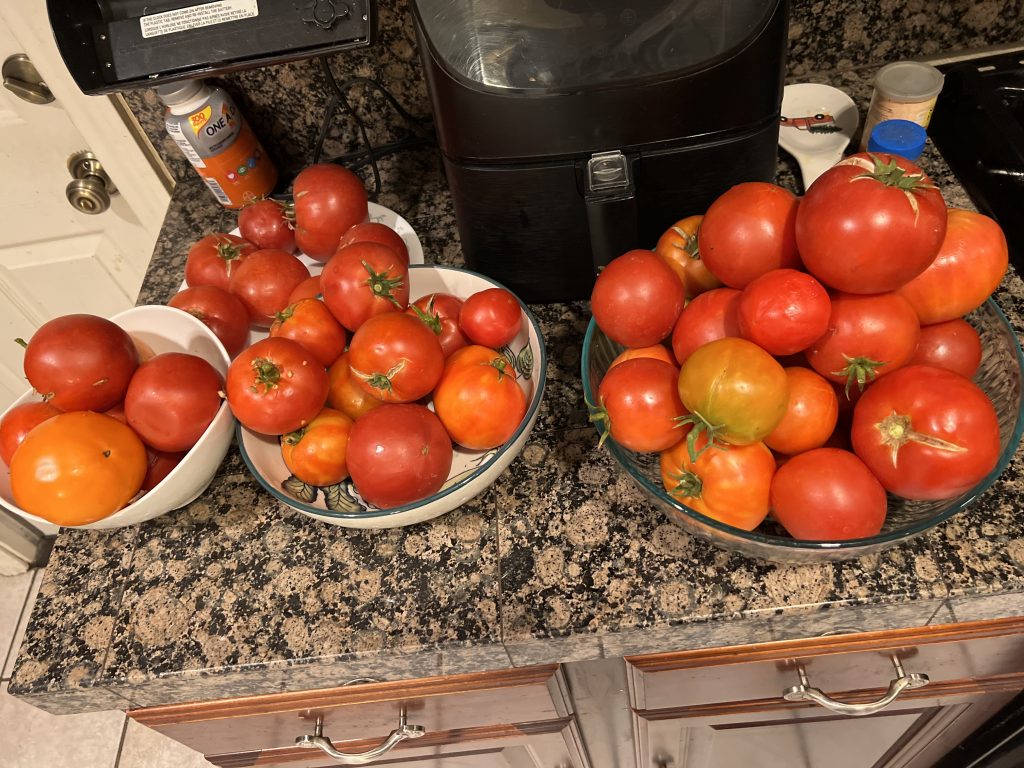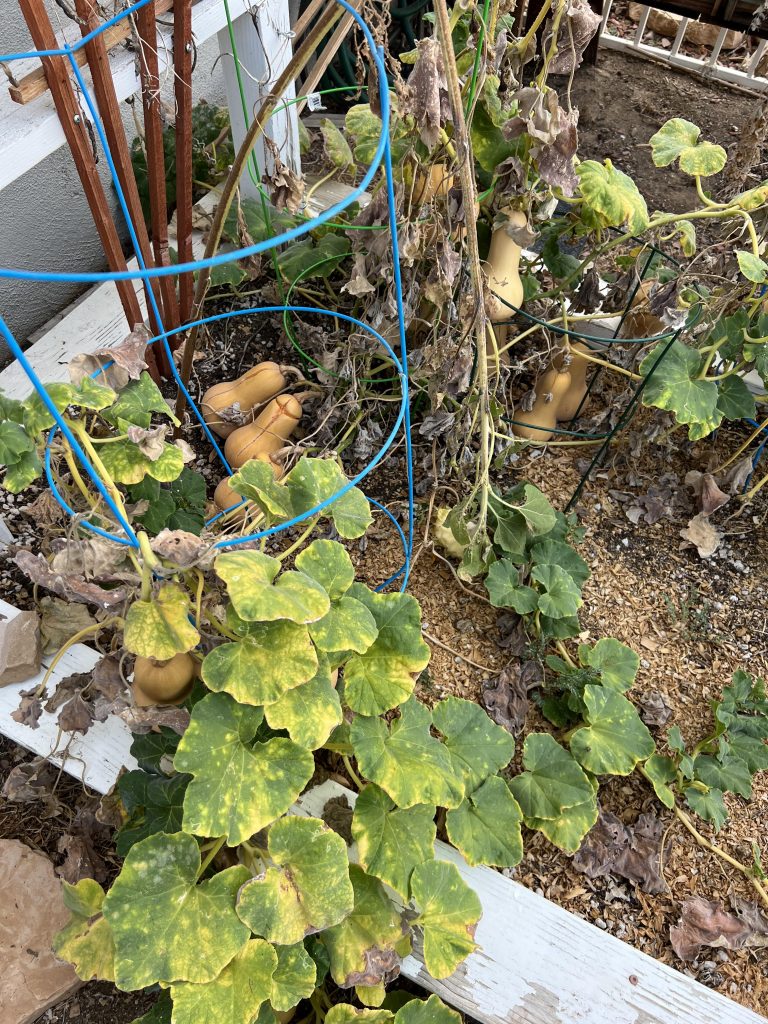I use affiliate links on my blog. When you click on my links, I may make a commission. Thank you!
In our fast-paced, concrete-dominated world, the idea of a lush, vibrant backyard garden might seem like a distant dream. However, this dream is within reach for anyone willing to embrace the world of backyard gardening. Beyond the obvious beauty and charm that a garden adds to your home, backyard gardening offers a multitude of benefits for both your physical and mental well-being, as well as the environment. In this comprehensive blog post, we’ll explore these benefits and reveal why backyard gardening is more than just a hobby – it’s a transformative lifestyle choice.

Cultivating a Healthier You
Physical Fitness in Your Backyard
A. Low-Impact Exercise: Gardening involves gentle physical activity, like digging, planting, and weeding, that can help improve your flexibility, strength, and stamina.
B. Sunshine Vitamin: Spending time outdoors in your garden exposes you to natural sunlight, which is a great source of Vitamin D, essential for bone health and overall well-being.
1.2. Stress Reduction and Mental Health Benefits
A. Nature’s Stress Reliever: The sights, sounds, and smells of your garden create a tranquil atmosphere that can reduce stress, anxiety, and depression.
B. Mindfulness and Relaxation: Gardening promotes mindfulness as you focus on the task at hand, providing a mental break from the demands of daily life.
The Green Way to Sustainable Living
2.1. Environmental Benefits
A. Carbon Footprint Reduction: Gardens act as a natural carbon sink, absorbing carbon dioxide from the atmosphere and reducing your carbon footprint.
B. Biodiversity Boost: Your garden can become a mini-ecosystem, attracting a variety of beneficial insects, birds, and other wildlife, thus contributing to local biodiversity.
C. Soil Health: Proper gardening practices, such as mulching and composting, enhance soil quality, reducing erosion and pollution.
2.2. Local Food Production
A. Fresh and Nutrient-Rich Produce: Growing your own fruits and vegetables ensures that you consume fresh, nutritious food without the need for long-distance transportation.
B. Reduced Food Waste: You can harvest what you need when you need it, reducing food waste and promoting sustainability.
2.3. Water Conservation
A. Efficient Water Use: Learning to water your garden efficiently through methods like drip irrigation and rainwater harvesting can help conserve this precious resource.

Dollars and Cents in Your Garden
3.1. Economic Benefits
A. Lower Grocery Bills: As you cultivate your own produce, you’ll find yourself making fewer trips to the grocery store, resulting in significant savings.
B. Increased Property Value: A well-maintained garden can enhance the aesthetic appeal and overall value of your home.
3.2. Income Generation
A. Selling Surplus Produce: If your garden produces more than you can consume, consider selling the surplus at local markets or to neighbors.
B. Garden-Related Business Ventures: Backyard gardening can evolve into a side business, offering services like landscaping, plant sales, or garden consultations.
Community and Social Connections
4.1. Connecting with Neighbors
A. Garden Sharing: Exchanging gardening tips, seeds, and surplus produce with neighbors can foster strong community bonds.
B. Community Gardens: Joining or starting a community garden can further strengthen social connections and provide shared green spaces.
4.2. Educational Opportunities
A. Gardening Clubs: Local gardening clubs and organizations offer workshops, resources, and opportunities for learning and sharing.
B. Teaching Moments: Backyard gardening is an excellent hands-on educational experience for children and adults alike, fostering a deeper appreciation for nature and food sources.
Chapter 5: The Road to Backyard Gardening Success

Choosing the Right Location and Size
A. Assessing Space: Determine the size and location of your garden area, factoring in sunlight, shade, and proximity to water sources.
B. Soil Quality: Conduct a soil test to understand your soil’s pH and nutrient content.
5.2. Planning Your Garden Design
A. Layout: Plan your garden’s layout, including the arrangement of beds, pathways, and any additional features like trellises or seating areas.
B. Plant Selection: Choose the right plants based on your climate, soil type, and personal preferences.
5.3. Garden Bed Preparation and Planting
A. Raised Beds: Consider using raised beds for better drainage and control over soil quality.
B. Soil Amendment: Improve soil fertility by incorporating organic matter, compost, and other soil amendments.
C. Timing: Plant seeds or seedlings at the appropriate time according to your local growing season.
Chapter 6: Nurturing and Maintaining Your Garden
Weeding and Pruning
A. Weed Management: Regularly remove weeds to prevent them from competing with your plants for nutrients and space.
B. Pruning Techniques: Prune your plants as needed to encourage healthy growth and improve air circulation.
6.2. Pest and Disease Management
A. Identifying Pests: Learn to recognize common garden pests and implement natural pest control methods.
B. Disease Prevention: Take preventative measures to keep your plants healthy and minimize the risk of diseases.
6.3. Watering Strategies
A. Consistent Watering: Ensure that your plants receive consistent moisture, especially during their early growth stages.
B. Watering Methods: Explore various watering methods, such as drip irrigation, to minimize water wastage.
Harvesting and Savoring Your Bounty
7.1. Harvesting Tips
A. Timing: Harvest your fruits and vegetables at the peak of ripeness for the best flavor and nutritional content.
B. Tools and Techniques: Use the right tools and techniques for different types of produce.
7.2. Preservation and Storage
A. Canning and Preserving: Discover methods like canning, freezing, and drying to preserve excess produce.
B. Storage Strategies: Learn how to store your harvested items to maintain freshness and extend their shelf life.
7.3. Cooking and Enjoyment
A. Homegrown Recipes: Experiment with recipes that highlight the flavors of your garden-fresh produce.
B. Sharing the Bounty: Share your garden’s delights with friends, family, and neighbors to spread the joy.
Your Journey Begins
Backyard gardening is more than just a hobby; it’s a lifestyle choice that offers a myriad of physical, mental, environmental, and social benefits. By embracing this journey, you can cultivate not only a beautiful garden but also a healthier, more sustainable, and more connected life. So, step into your garden, pick up your gardening tools, and let the magic of backyard gardening transform your world.
In the end, it’s not just about the garden you grow; it’s about the life you cultivate. Happy gardening!

Leave a Reply